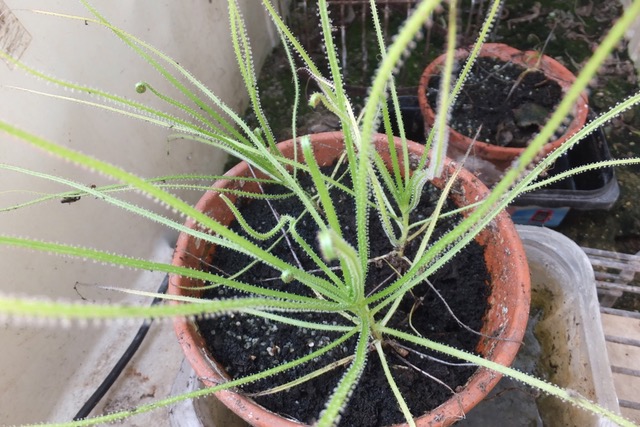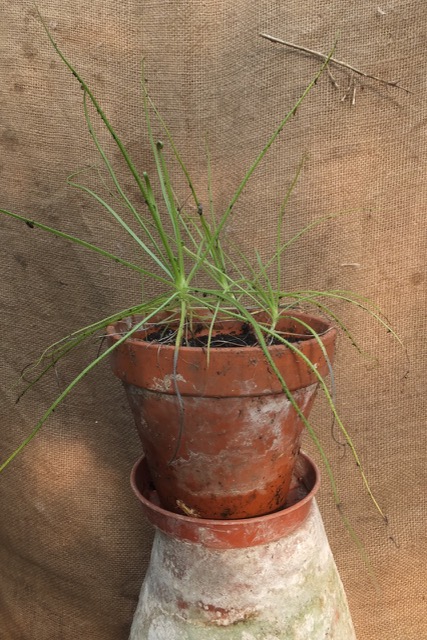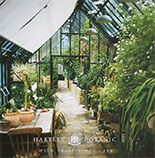
Here’s a challenging greenhouse plant combining delightful perfume, charming almost fern like foliage, usefully catching flies, with another even more macabre habit. Dewy Pine, Drosophyllum lusitanicum, is unique, truly carnivorous, one of THE most effective fly catchers, yet unlike almost all others not a bog plant. Apparently this can also survive passing undergrowth fires, probably not something you wish to check.
Known also as the Portugese Sundew from its catching insects with sticky leaves Dewy Pine is not related to Sundews, nor much else, it’s monotypic, i.e. no other family. Moreover this strange plant grows solely in a narrow belt near the coast of Portugal and N. Africa where on-land winds bring fogs and heavy dew. The climate’s temperate and moist in winter, hot and dry in summer, poor sandy, lime free, soil, dry but with that daily fog.
With such remarkably specific origins not surprisingly this’s not the easiest plant to keep happy. Not long lived here, however on the other hand not at all difficult to raise from seed so we can just start again.

The seed needs sowing on the surface of poor sandy compost, ideally mixed with decayed pine needles, then scantily covered. A warm humid propagator is necessary, mist the compost often but never waterlog. Now oddly seed germinates best in autumn but low light in winter is not conducive with seedlings easily lost unless extra light is given. Without extra light better wait for early spring as this demands full sunlight.
Obviously as carnivorous feeding is anathema, indeed fatal, as is over watering, or allowing the plants to dry out. It’s this need for misting, not sprinkling, getting moisture to the roots- in a dryish compost, that makes them a tad demanding. To say little of the evils of cold and mould in winter!
But get it right and that sweet smell of honey greets you as this curious plant lures countless flies to a sticky end. Oh yes, there’s the second macabre twist, this’s not only good at catching flies but at consuming them in situ, by enveloping them in so much sticky sap some drips – so better not stand this on your finest furniture!


